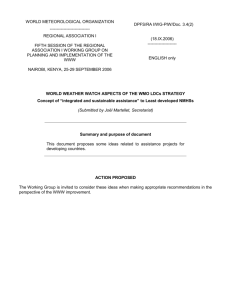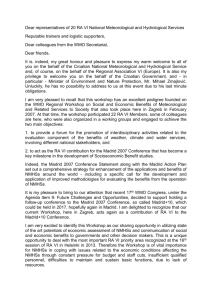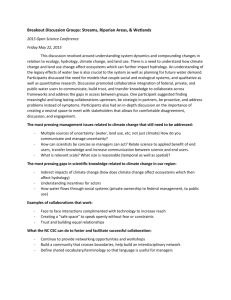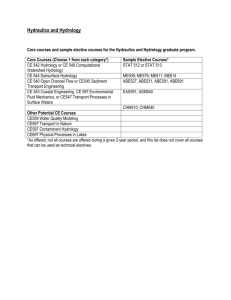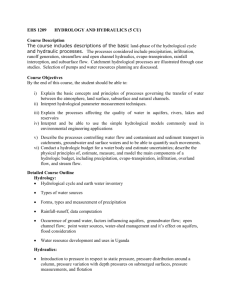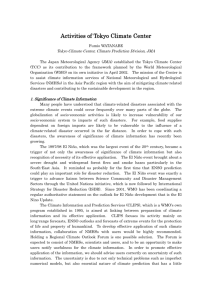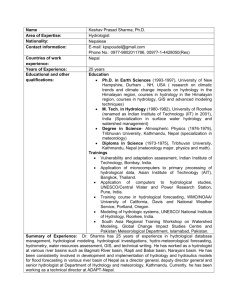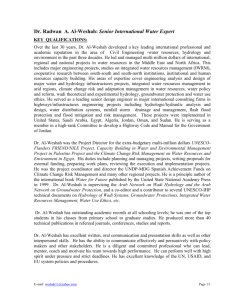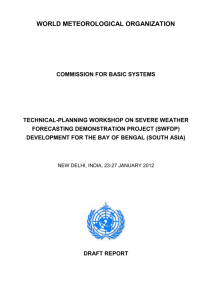Categorization of NMHSs
advertisement
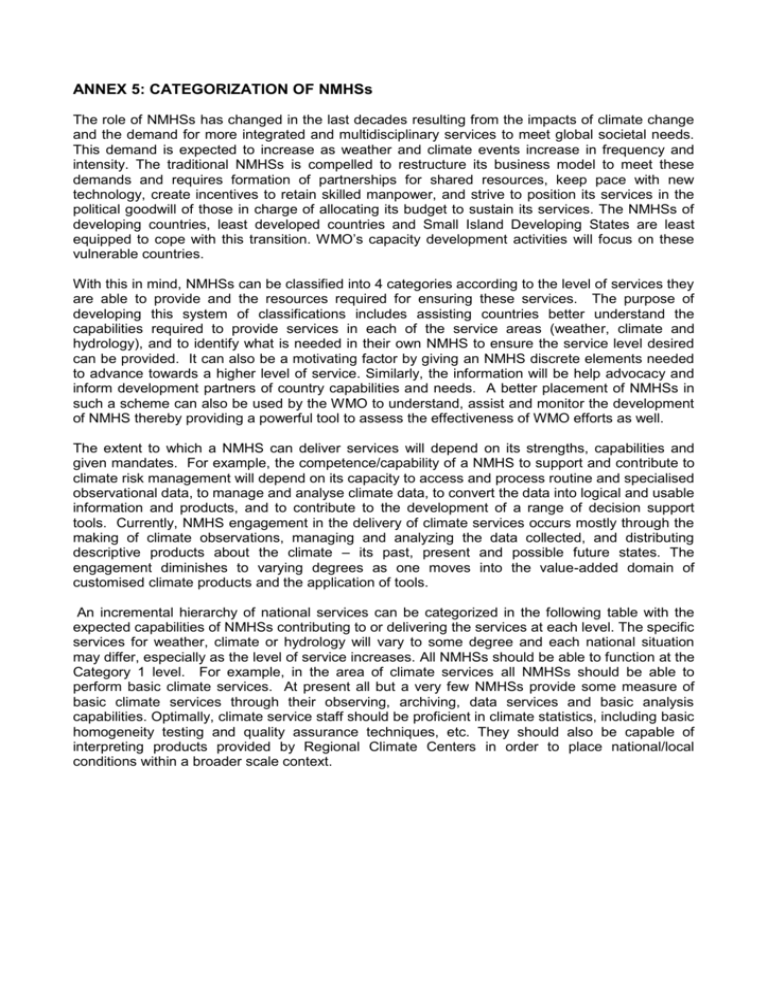
ANNEX 5: CATEGORIZATION OF NMHSs The role of NMHSs has changed in the last decades resulting from the impacts of climate change and the demand for more integrated and multidisciplinary services to meet global societal needs. This demand is expected to increase as weather and climate events increase in frequency and intensity. The traditional NMHSs is compelled to restructure its business model to meet these demands and requires formation of partnerships for shared resources, keep pace with new technology, create incentives to retain skilled manpower, and strive to position its services in the political goodwill of those in charge of allocating its budget to sustain its services. The NMHSs of developing countries, least developed countries and Small Island Developing States are least equipped to cope with this transition. WMO’s capacity development activities will focus on these vulnerable countries. With this in mind, NMHSs can be classified into 4 categories according to the level of services they are able to provide and the resources required for ensuring these services. The purpose of developing this system of classifications includes assisting countries better understand the capabilities required to provide services in each of the service areas (weather, climate and hydrology), and to identify what is needed in their own NMHS to ensure the service level desired can be provided. It can also be a motivating factor by giving an NMHS discrete elements needed to advance towards a higher level of service. Similarly, the information will be help advocacy and inform development partners of country capabilities and needs. A better placement of NMHSs in such a scheme can also be used by the WMO to understand, assist and monitor the development of NMHS thereby providing a powerful tool to assess the effectiveness of WMO efforts as well. The extent to which a NMHS can deliver services will depend on its strengths, capabilities and given mandates. For example, the competence/capability of a NMHS to support and contribute to climate risk management will depend on its capacity to access and process routine and specialised observational data, to manage and analyse climate data, to convert the data into logical and usable information and products, and to contribute to the development of a range of decision support tools. Currently, NMHS engagement in the delivery of climate services occurs mostly through the making of climate observations, managing and analyzing the data collected, and distributing descriptive products about the climate – its past, present and possible future states. The engagement diminishes to varying degrees as one moves into the value-added domain of customised climate products and the application of tools. An incremental hierarchy of national services can be categorized in the following table with the expected capabilities of NMHSs contributing to or delivering the services at each level. The specific services for weather, climate or hydrology will vary to some degree and each national situation may differ, especially as the level of service increases. All NMHSs should be able to function at the Category 1 level. For example, in the area of climate services all NMHSs should be able to perform basic climate services. At present all but a very few NMHSs provide some measure of basic climate services through their observing, archiving, data services and basic analysis capabilities. Optimally, climate service staff should be proficient in climate statistics, including basic homogeneity testing and quality assurance techniques, etc. They should also be capable of interpreting products provided by Regional Climate Centers in order to place national/local conditions within a broader scale context. Level of Service Category 1 - Basic Weather Services Climate Services Weather observations Climate observations Weather Data Climate Data Management Management Interaction with Interaction with weather data and climate data and product users product users Description of capacity needed to meet service level Hydrology Services Hydrological observations Hydrological Data Management Interaction with hydrology data and product users Category 2 - Essential Medium-range Seasonal Climate (synoptic scale) outlooks forecasts and Climate monitoring warnings Established links with media and DRR communities Hydrological data products for design and operation of water supply structures Water level and flow monitoring Short-term flow forecasts (low flows) Flood forecasting Specialized weather products for wide range of sectors Well integrated into DRR communities and mature links with media Specialized climate products Decadal climate prediction Long-term climate projections Seasonal stream flow outlooks Specialized hydrology products Customized weather Category 4 products - Advanced Weather application tools. Customized climate products Climate application tools Customized hydrology products Hydrology application tools Category 3 – Full Small network of quality controlled observations Basic data processing, archiving and communication systems Little or no backup / offsite storage, or contingency options Rudimentary staff (observers and some meteorologists trained to BIP standards) No 24 /7 operation Rudimentary QMS No R&D Able to integrate and take observations from other parties Well-established protocols for emergencies, backup of data and minimum offsite facilities Staff (observers and meteorologists trained to BIP standards) 24/7 operation. QMS well established Access most NWP data/products from other centres Small R&D Some partnerships as junior members Advanced observation equipment Runs own NWP suite R&D Well educated/trained staff Own training group Developed library and information services Active partnerships with NMHSs taking a leading role Advanced observations Leading R&D Well developed ETR
